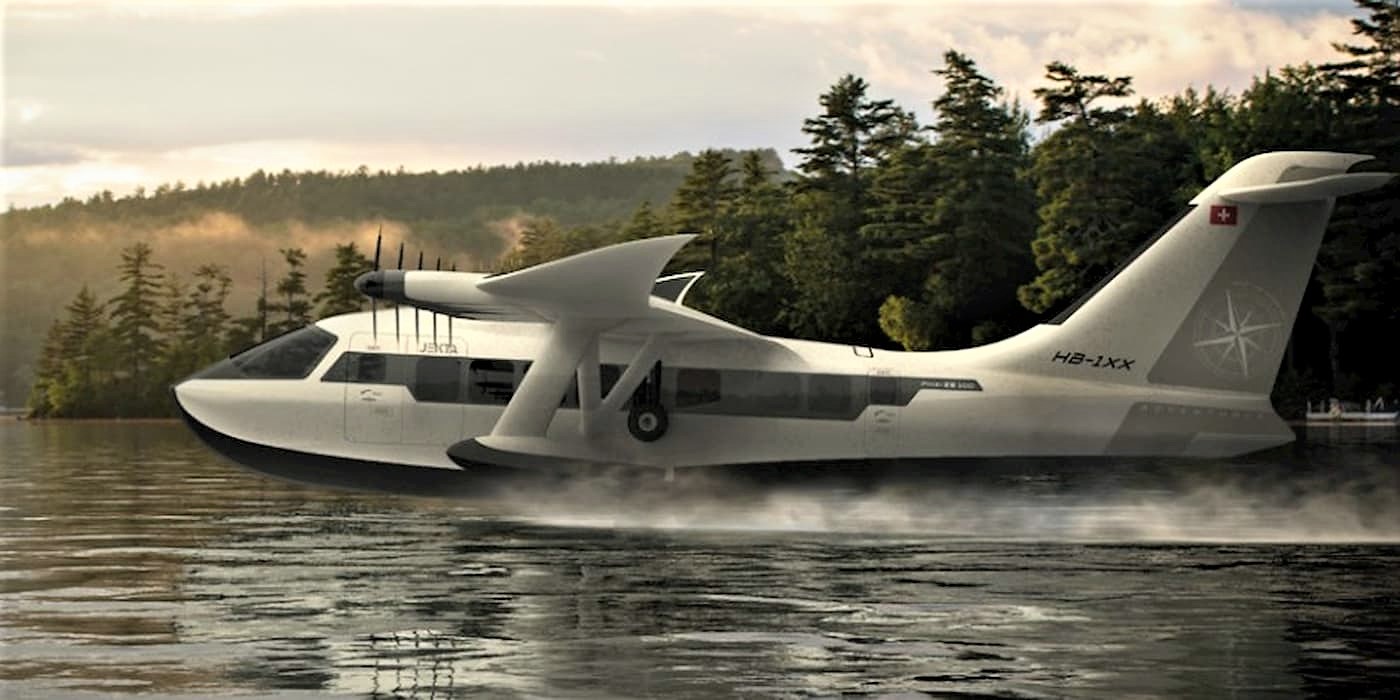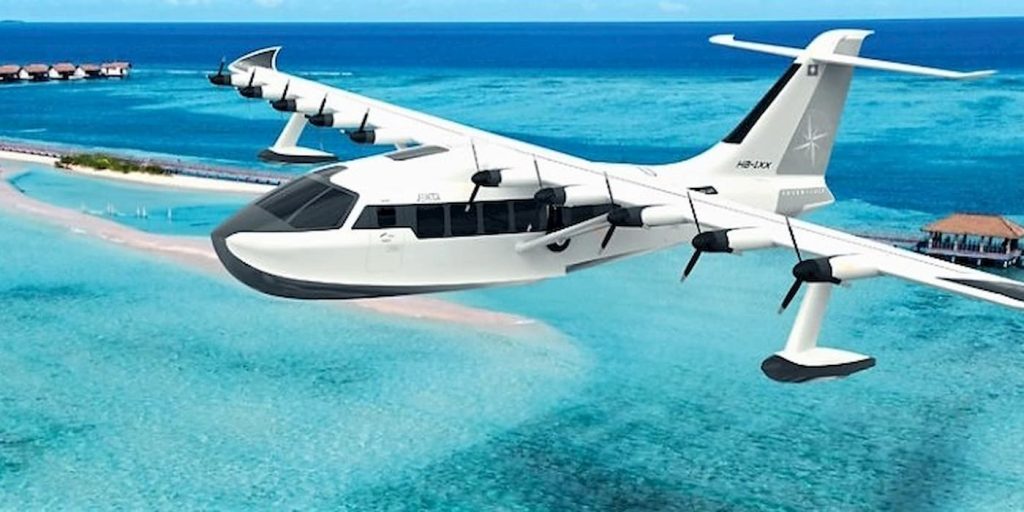
Switzerland-based aircraft manufacturer Jekta Switzerland SA is developing an electric passenger hydro aircraft, or seaplane, capable of flying nearly 100 miles on a single charge. The company revealed today it has already secured its first order.
Electric seaplane maker receives its first order
Jekta revealed the electric seaplane, the PHA-ZE 100, at the Abu Dhabi Air Expo last year. The company announced on its Facebook it is the first time since the middle of last century that Jekta is proposing a commercial displacement seaplane.
The amphibious aircraft will generate zero emissions, with ten motors and an electric propulsion system supplying 180 kW of power. Jekta says the electric seaplane will be able to fly for 2 hours with an extra 2 hours reserved at cruising speeds up to 135 knots.
With several configurations, the PHA-ZE 100 will be able to fit up to 19 passengers and three crew members.
The plane is made with modern composite materials and is equipped with modern navigation and piloting systems.
Jekta says that, with zero emissions, the seaplane practically “means the lowest cost per passenger possible and the possibility to be used with low or no ground amenities at all.”

According to Reuters, the electric seaplane maker has already secured its first order. The order is for ten planes from Dubai-based Gayo Aviation and Tourism, which looks to reduce emissions. Although no specifics of the deal were mentioned, large traditional seaplanes can run over $1 million.
Jekta CEO George Alafinov (previous founder of hydro aircraft maker Aerovolga) said the electric seaplane is expected to be operational in 2029.
Electrek’s Take
Several aircraft manufacturers have taken the initiative to develop electric seaplanes. For example, Harbour Air, a British Columbia-based commercial seaplane operator, introduced the world’s first all-electric seaplane in a partnership with MagniX in 2019.
Although seaplanes make up a small percentage of civil aviation, they can be especially dangerous in terms of greenhouse gas emissions due to their short and frequent stops.
The ICCT predicts electric aircraft can provide a 49-88% reduction in CO2 emissions and are between 2 and 3.2 times more efficient during cruise than their fossil-fueled counterparts. Now we need to get them rolling off the production line and into customers’ hands.
FTC: We use income earning auto affiliate links. More.


Comments